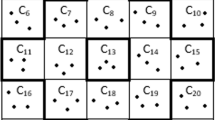Abstract
Because of comprehensive and simple structures, various types of combinatorial designs are used to construct key predistribution schemes for wireless sensor networks. However, these schemes are typically concentrated on networks, where all sensor nodes are same in terms of capabilities. In this paper, we propose a key predistribution scheme based on combinatorial designs for two-layer hierarchical wireless sensor networks, where a small percentage of sensor nodes have more capabilities such as storage, communication range and battery power and so on. In this scheme, we use an orthogonal array to construct a key predistribution scheme. Then we assign keys associated with a block to a more capable node and keys associated with a random subset of a block to a less capable node. General formulas for metrics of the proposed scheme are obtained and these metrics are evaluated in some different network models. It is found that the resulting scheme has better resilience and tradeoff than some probabilistic schemes.
Similar content being viewed by others
References
Eschenauer, L., & Gligor, V. B. (2002). A key-management scheme for distributed sensor networks. In Proceedings of the 9th ACM conference on computer and communications security (pp. 1–47).
Chan, H., Perrig, A., & Song, D. (2003). Random key predistribution schemes for sensor networks. In IEEE symposium on research in security and privacy (pp. 197–213).
Blom, R. (1984). An optimal class of symmetric key generation systems. In Proceedings of the international conference on the theory and applications of cryptographic techniques (pp. 335–338).
Liu, D., & Ning, P. (2003). Location-based pairwise key establishments for static sensor networks. In Proceedings of the 1st ACM workshop security of ad hoc and sensor networks, Virginia (pp. 72–82).
Liu, D., Ning, P., & Du, W. (2008). Group-based key pre-distribution in wireless sensor networks. ACM Transactions on Sensor Networks, 4(2), 1–30.
Çamtepe, S. A., & Yener, B. (2004). Combinatorial design of key distribution mechanisms for wireless sensor networks. In Proceedings of the European symposium on research computer security (pp. 293–308).
Lee, J., & Stinson, D. R. (2004). Deterministic key predistribution schemes for distributed sensor networks. In International Workshop on Selected Areas in Cryptography (pp. 294–307). Berlin: Springer.
Lee, J., & Stinson, D. R. (2005). A combinatorial approach to key predistribution schemes for distributed sensor networks. In WCNC 2005, IEEE wireless computing and networking conference (pp. 1200–1205).
Paterson, M. B., & Stinson, D. R. (2014). A unified approach to combinatorial key predistribution schemes for sensor networks. Designs, Codes and Cryptography, 71(3), 433–457.
Martin, K. M., & Paterson, M. (2008). An application-oriented framework for wireless sensor network key establishment. In Proceedings of the third workshop on cryptography for ad-hoc networks (WCAN 2007) (Vol. 192, No. 2, pp. 31–41).
Xiao, Y., Rayi, V. K., Sun, B., Du, X., Hu, F., & Galloway, M. (2007). A survey of key management schemes in wireless sensor networks. Computer Communications, 30(11–12), 2314–2341.
Rani, T. P., & Jaya Kumar, C. (2012). Survey on key pre distribution for security in wireless sensor networks. In Advances in Computer Science and Information Technology. Networks and Communications (pp. 248–252).
Traynor, P., Choi, H., Cao, G., Zhu, S., & Porta, T. L. (2006) Establishing pair-wise keys in heterogeneous sensor networks. In Proceedings of IEEE INFOCOM.
Kendall, M., Martin, K. M., Ng, S. L., Paterson, M. B., & Stinson, D. R. (2014). Broadcast-enhanced key predistribution schemes. ACM Transactions on Sensor Networks, 11(1), 1–33.
Stinson, D. R. (2003). Combinatorial design: Constructions and analysis. New York: Springer.
Fang, K. T., Lin, D. K. J., Winker, P., & Zhang, Y. (2000). Uniform design: Theory and application. Technometrics, 42(3), 237–248.
Hedayat, A. S., Sloane, N. J. A., & Stufken, J. (1999). Orthogonal arrays: Theory and applications. New York: Springer.
Acknowledgements
This work was supported by National Science Foundation of China under Grant No. 61373171 and The 111 Project under Grant No. B08038.
Author information
Authors and Affiliations
Corresponding author
Rights and permissions
About this article
Cite this article
Gao, Q., Ma, W. & Luo, W. A Combinatorial Key Predistribution Scheme for Two-Layer Hierarchical Wireless Sensor Networks. Wireless Pers Commun 96, 2179–2204 (2017). https://doi.org/10.1007/s11277-017-4292-2
Published:
Issue Date:
DOI: https://doi.org/10.1007/s11277-017-4292-2




